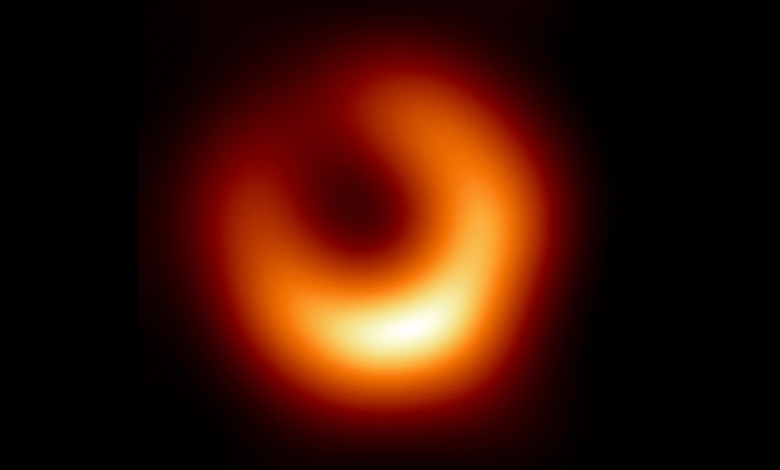Astrophysicist Reveals: Mini Spaceship Could Reach Black Hole via Laser Propulsion!

A Laser-Propelled Mini Spacecraft: The Future of Space Exploration to Nearby Black Holes
The pursuit of understanding black holes has captivated humanity’s imagination for centuries. As one of the most enigmatic and powerful phenomena in the universe, black holes present a unique challenge for scientists and explorers alike. Now, advancements in technology have led to a compelling proposal: what if we could send a miniature spacecraft, propelled by lasers, to explore one of our neighboring black holes? Such a mission could revolutionize our comprehension of the cosmos, and exciting developments suggest that this dream could soon become a reality.
The Vision: Laser Propulsion Technology Explained
The concept of laser propulsion hinges on the strategic use of high-intensity laser beams to push spacecraft through space. In essence, powerful lasers would be focused on a lightweight vehicle, ultimately transferring their energy to the spacecraft in the form of thrust. This approach offers several advantages over traditional propulsion systems, which rely on chemical fuels that would become unwieldy for long-distance interstellar travel.
Laser propulsion is celebrated for its potential to achieve high speeds, making it ideal for reaching distant celestial bodies quickly. As the technology continues to mature, researchers envision using ground-based laser systems to propel mini spacecraft into interstellar space, avoiding the limitations imposed by on-board fuel storage.
How Would a Laser-Powered Mini Spacecraft Work?
The operational concept of a laser-propelled spacecraft involves several key components:
- Lightweight Design: The spacecraft would need to be fundamentally built from lightweight materials. Such designs include thin layers of carbon or other innovative materials that minimize mass without compromising structural integrity.
- Laser Array: Ground-based laser systems would aim enormous, high-powered laser beams at the spacecraft during its ascent from Earth’s atmosphere, initiating the propulsion process. These lasers would be precisely calibrated to ensure that the energy imparted effectively accelerates the spacecraft.
- Targeting Black Holes: To explore black holes, the mini spacecraft would need to be directed towards nearby candidates, such as V616 Monocerotis or A0620-00, both of which lie within tens of thousands of light-years from Earth. Although this sounds vast, in cosmic terms, these destinations are relatively close.
Why Black Holes?
The scientific community is deeply intrigued by black holes, often regarded as the ultimate laboratories for testing the laws of physics. These regions exhibit gravity so strong that not even light can escape, leading to numerous unanswered questions about the universe, time, and space.
Exploring black holes could aid in understanding fundamental theories, especially those concerning gravity, quantum mechanics, and general relativity. Observing the behavior of material approaching these gravitational beasts could unravel unknown physics governing their formation, structure, and influence on surrounding matter.
The Exciting Possibility of Near-Black Hole Missions
The introduction of mini spacecraft opens doors to possibilities previously thought improbable. These missions could serve as precursors to larger explorative ventures, utilizing laser propulsion to carry instruments designed for comprehensive data collection. By approaching a black hole, a spacecraft could capture vast amounts of information about its environment, including radiation emitted during material accretion and gravitational waves produced during dramatic cosmic events.
The Challenges Ahead
While the vision of a laser-propelled mini spacecraft is tantalizing, several significant challenges remain before this audacious project can take flight:
- Technological Development: Creating a reliable, powerful laser guidance system demands significant research and investment. Current laser technologies must be advanced to achieve the necessary power levels while ensuring safety during operation.
- Spacecraft Durability: The instruments onboard the mini spacecraft must withstand the harsh conditions of space and the immense forces during acceleration. Engineers and scientists must collaborate to create robust systems capable of enduring these extremes.
- Data Transmission: Given the immense distances involved, effective communication back to Earth next presents another complex issue. Data from missions to black holes could take years, even decades, to reach back to civilization.
Collaborative Efforts in Space Exploration
This exploration endeavor highlights the importance of international collaboration in advancing space research and technology. Agencies such as NASA, ESA (European Space Agency), and private companies are cooperating and sharing expertise, stellar resources, and knowledge to innovatively harness laser propulsion technologies.
Moreover, this push towards new exploration techniques continuously inspires the next generation of scientists and engineers. Engaging young minds in the discussion around space technology and exploration fuels the ambition necessary to overcome the hurdles lying ahead.
The Future: A New Era of Cosmological Exploration
Successfully launching a laser-propelled mini spacecraft toward a nearby black hole could mark the dawn of a new era in cosmic exploration. Imagine robotic explorers passing through the eerie halos of black holes, gathering invaluable data about these mysterious entities. This innovative approach not only enhances our scientific endeavors but could also foster a greater understanding of our universe, giving humanity a window into the cosmos that we have never had before.
As we stand on this precipice of discovery, vigilance and innovation are paramount. The excitement of venturing into the gravitational mysteries of black holes is only matched by the imperative of understanding our universe’s underlying truths. In the coming years, researchers will undoubtedly unveil more details about the feasibility of this high-speed exploration, pushing the boundaries of what we know and inspiring future generations to reach for the stars.
Conclusion
In summary, the development of a laser-propelled mini spacecraft could potentially open exciting new pathways for exploring black holes. By advancing laser technology and miniature spacecraft design, we stand on the brink of unprecedented scientific discovery. Although challenges abound, collaborative efforts and innovative thinking will undoubtedly pave the way for humanity’s next great adventure into the dark, uncharted regions of the universe.
Summary of Key Points
- Laser propulsion technology: A promising method for propelling lightweight spacecraft through space utilizing ground-based laser systems.
- Mini spacecraft design: Emphasizes lightweight materials and high-speed capabilities to reach distant destinations like nearby black holes.
- Scientific motivation: Unraveling the mysteries of black holes could deepen our understanding of fundamental physics and the universe.
- Challenges: Technological advancements, spacecraft durability, and effective data transmission to Earth pose significant hurdles.
- Collaborative efforts: Engagement between international space agencies and private enterprises is crucial for moving forward in space exploration.
- Future exploration: Successful missions to black holes could inspire future generations and broaden humanity’s horizons in cosmological research.





